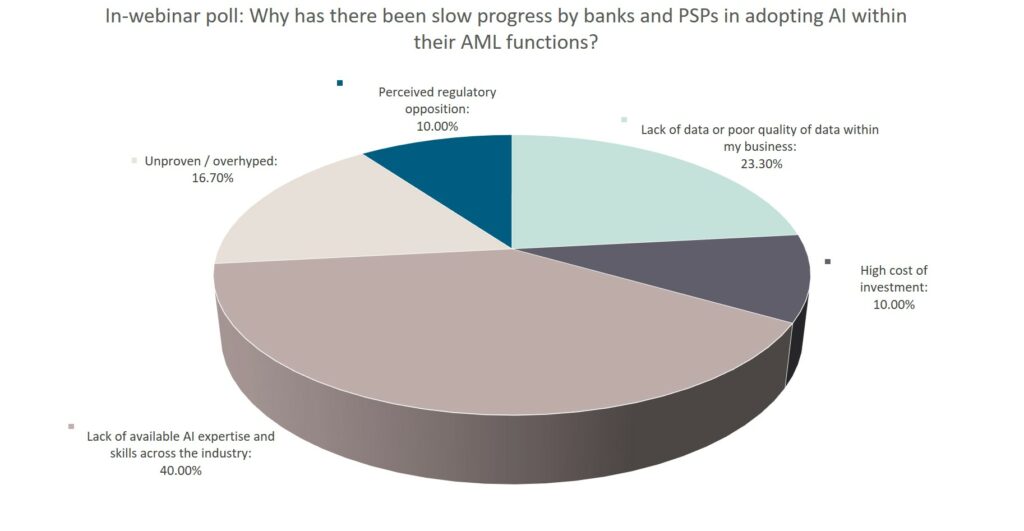There has been much enthusiasm for what Artificial Intelligence (AI) can do in the AML space. The conversation has often centred on the most common benefits of using AI and the need for correct implementation, but little has been shared from a data science perspective around what AI really has the potential to do – and the practicality of where to begin and what will be needed to achieve success.
In a recent Banking Circle webinar – Weathering the Data Storm: Hype and Reality of Launching AI in AML – Livia Benisty, Global Head of Business AML and Christian Karsten, Head of Advanced Analytics, shared their insights and wisdom on how organisations can utilise AI within their AML function. The session was moderated by Esther Groen, an adviser to Holland FinTech and an Executive Board member of the European Women Payments Network.
You can watch the full webinar on demand here, or read on for our summary of the key takeaways from the event.

Can AI reduce false positives?
With the rise of data-driven technology, the obvious headline to any conversation around the benefits of using AI in AML is to help reduce false positives.
“The biggest pain point for most transaction monitoring teams is false positives,” Livia Benisty, Global Head of Business AML at Banking Circle, explained.
False positives are inefficient, costly, and can be demotivating for the transaction monitoring team who may end up losing faith in the AML system – “for me that’s an operational risk too,” Livia said.
According to Christian Karsten, Head of Advanced Analytics at Banking Circle, vastly reducing false positives is relatively easy to do using machine learning. But while that reduction is important from an operational perspective, introducing AI can actually bring far greater benefits than just an impact on rates of false positives.
“We are now in a place where we can start to find patterns that we simply couldn’t before, when we only had rules that were considering a few dimensions of your payment network,” Christian explained. “AI can be utilised to find complex fraud patterns that you couldn’t see before – that’s one of the key benefits.”
Busting the ‘big data’ myth
According to Christian, the idea that organisations need ‘big data’ to implement AI in their AML strategies is a myth that needs busting. In fact, just a small amount of solid payment data and a thorough understanding of your business is enough to get started, he said.
“The important point is to have a strong transaction monitoring team that can label payments in a consistent way,” Christian explained. Over time, this will allow you to build a clean set of data that can be used to inform your model – the better the data, the better your modelling will be.
Top tips: How to get started
Asked for her key piece of advice on introducing AI to your AML function, Livia highlighted the importance of starting out with the right mindset, and then experimenting.
“Don’t be scared of this. It’s about getting the data mindset and approach right first, and you can do a lot with that,” Livia said. “Hire people that think that way, and then have some fun with it and see where you can take it… There is a lot of hype, and while AI isn’t going to solve everything, and it isn’t going to be easy, there is a lot you can do with it.”
Christian echoed the need to begin with a data-driven approach, and added that the effort required – from both an operational and a development perspective – should not be underestimated.
“You should get started certainly with a good data ecosystem,” he said. “And you’ll probably be surprised by how little time you’ll spend on developing the actual model, versus setting up the whole infrastructure, and getting things to run consistently and robustly,” he added.
You can watch the full webinar on demand here.


